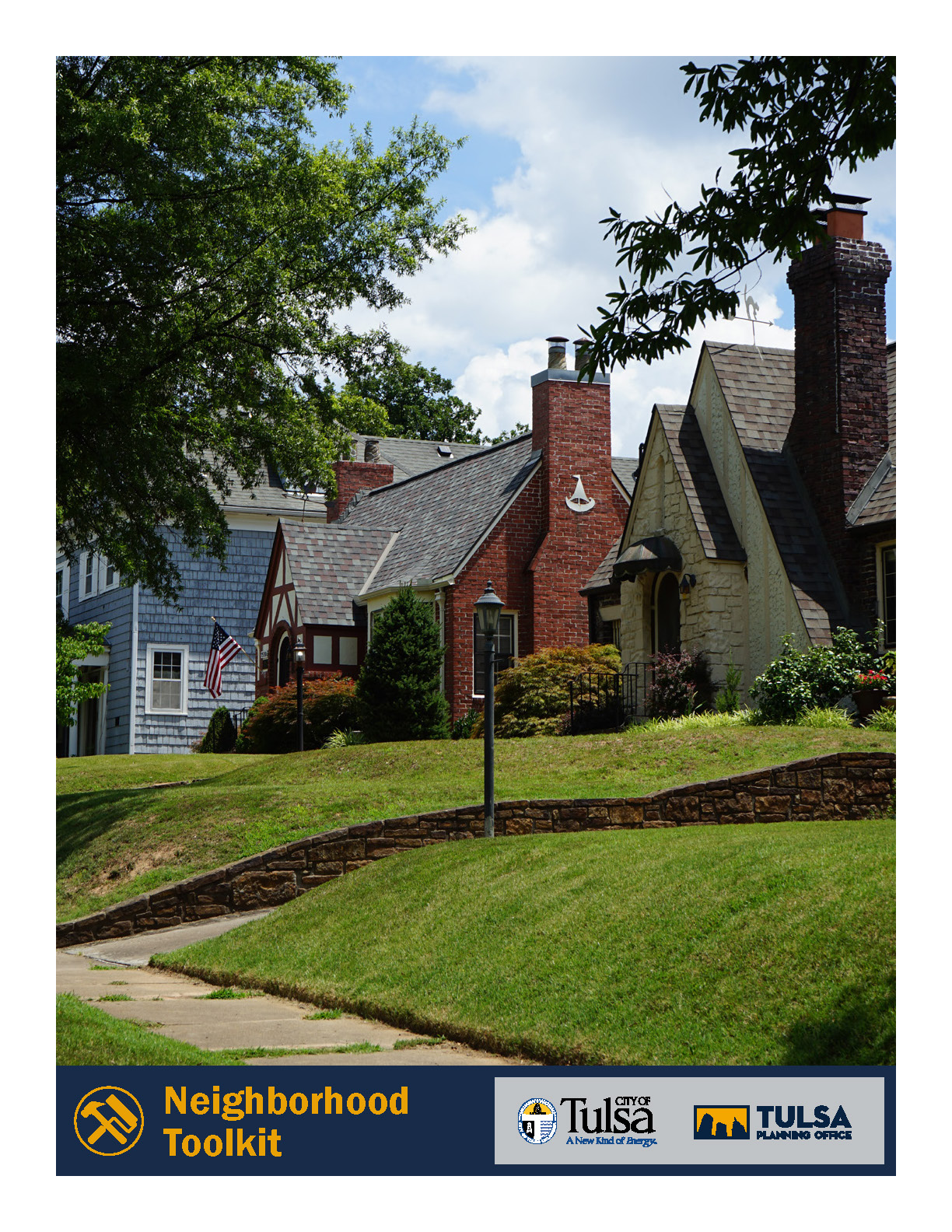Install a Storm Shelter
Toolkit Contents
Projects
- Start a Neighborhood Association
- Develop a Neighborhood Identity Sign
- Throw a Block Party
- Organize a Neighborhood Cleanup
- Report Code Violations
- Establish a Neighborhood Tool Library
- Start an Alert Neighbors Program
- Prepare for an Emergency
- Install a Storm Shelter
- Plant and Care for Trees
- Install Rain Barrels
- Plant a Rain Garden
- Request Mixed-Use Zoning Along BRT Route
Description
Tornadoes are a fact of life in Oklahoma, and though tornadoes typically occur in the spring and summer months, they can occur at any time of year. Having easy access to a storm shelter or safe room is the best way to keep yourself and your family safe. Shelters and safe rooms built to FEMA guidelines are likely to withstand extreme winds without failing.
Storm shelter costs vary depending on a number of factors, including the size and type you select. Generally, you can expect to pay from $2,500 to $8,000 or more. The State of Oklahoma’s Sooner Safe program (see right) offers a 75% rebate of up to $2,000 toward the purchase and installation of a shelter. This lottery program requires compliance with FEMA guidelines for construction and installation.
If you need financing, many local credit unions offer storm shelter loans to members, and the FHA offers safe room financing. Homeowners who receive a disaster assistance loan from the Small Business Administration (SBA) to repair or rebuild a damaged or destroyed home may use some of the loan proceeds to construct a safe room. The SBA can also increase the approved disaster loan by up to 20 percent to cover the cost of adding a safe room.
It is a good idea to register your storm shelter with the City of Tulsa to help first responders locate your shelter when responding to a severe storm.
Steps
- Assess your needs for a shelter. Consider how large it needs to be in order to accommodate members of your household, pets, an emergency kit, and any other supplies. Be sure to check the height, width, and depth. Shelters should have a minimum of 3 square feet per person.
- Decide which type of shelter is best for you. There are multiple types of shelters available, including indoor above-ground concrete or steel safe rooms, underground garage shelters, and outdoor, in-ground storm shelters with either a flat or sloped top. When considering the type of shelter you need, factor in accessibility, as in-ground shelters require the ability to move up and down stairs. Choosing the best shelter for you depends on your specific needs, conditions, and budget.
- Find a reputable, trustworthy company to install your shelter. Make sure the shelter you purchase is built and installed according to FEMA 320, FEMA 361, and ICC-500, and that the company is fully insured. Safe rooms built to FEMA guidelines are able to withstand winds of an EF-5 tornado, and occupants have a very high probability of being protected from injury. You should also check reviews and references from past customers.
- Register your new storm shelter or safe room with the City of Tulsa to help first responders find you in case of a disaster.
Resources
Sooner Safe – Storm Shelter Rebates
soonersafe.ok.gov
The State of Oklahoma offers a lottery program for rebates on storm shelters. Winners receive a voucher that covers 75% of the cost of installing a shelter, up to $2,000. The shelter and installation must comply with FEMA 320, FEMA 361, and ICC-500.
National Storm Shelter Association
http://nssa.cc
City of Tulsa Storm Shelter Registration
cityoftulsa.org/residents/public-safety/storm-shelter-registration/
FORTIFIED Home & Roof Programs
disasterresiliencenetwork.org/fortified
FORTIFIED is a building method that goes beyond required building codes to strengthen buildings against high winds and hail. Homeowners in Oklahoma can receive significant discounts on insurance for re-roofing or building to this standard.
Tribal Rebate Programs
Most tribal nations in Oklahoma offer assistance for their homeowner tribal members who want to install a storm shelter. Contact your tribe’s housing authority and ask about storm shelter assistance.
